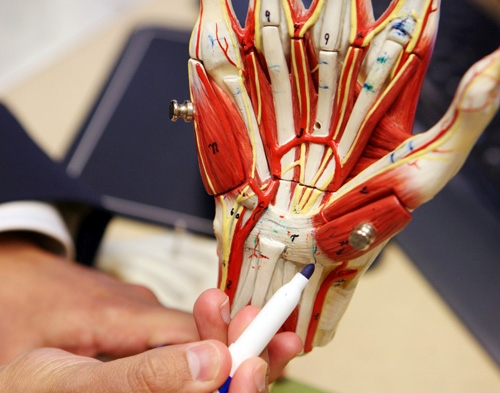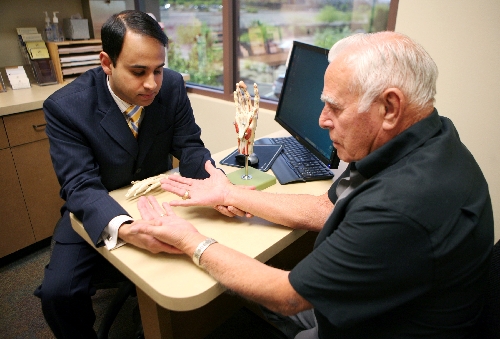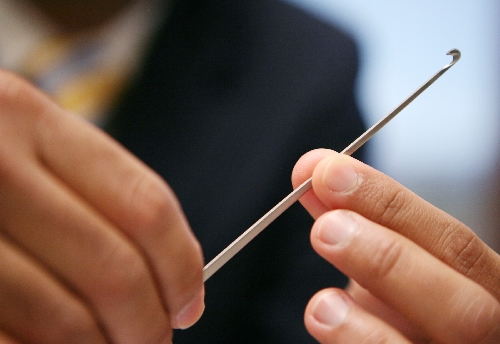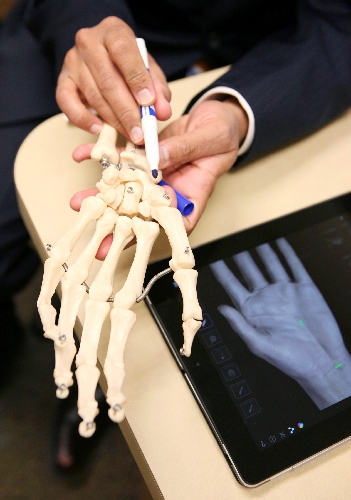Endoscopic surgery offers hope for relief from carpal tunnel





After 45 years as an executive assistant, Francine Barna started dropping things.
Not appointments or phone calls or things critical to her job as the assistant to the head of a financial institution in New York. She dropped things, literally. Glasses. Keys. Pens.
If Barna, 66, tried to hold something in her right hand, there was a good chance it would slip through her fingers and fall to the ground.
"I couldn’t hold things. I couldn’t make a fist, I couldn’t close my hand," says Barna, who retired to Las Vegas in 2011.
Barna, who spent much of her career behind a typewriter, had carpal tunnel syndrome.
The syndrome is a pinching or compression of the nerve that runs from the forearm into the palm through the wrist. It remains a major problem in the workplace, afflicting workers who engage in repetitive tasks, such as typing.
According to a 2007 report from the Bureau of Labor Statistics, carpal tunnel syndrome is one of the top two disabling diseases or illnesses in private industry, causing sufferers to miss an average of 28 days from work. Fractures are No. 1, causing a loss of 30 days.
Barna missed nearly four weeks of work after she had surgery to relieve the pressure on the nerve.
The history of carpal tunnel syndrome dates back to nearly 80 years ago, Brown Hand Center surgeon Nitin Engineer says.
There are more than 100 reasons why someone may develop carpal tunnel syndrome, Engineer says, from repetitive use to some medical conditions.
Symptoms are hand weakness, tingling in the hand, numbness. Many patients seek treatment after they start dropping things, like Barna did. Since her first operation on the right hand three years ago, she has had the left hand treated, too.
"It’s very similar to when the leg falls asleep," Engineer says of the sensation people may feel in their hands when they have carpal tunnel syndrome. "The telltale signs are symptoms that wake you up in the middle of the night, painful burning sensations in the hands. I’ve had some patients who were so severe, they just could not sleep."
It can also happen at any age. His youngest patient was 16 years old; his oldest was 94. The condition can afflict anyone, too. It has never been shown to have a genetic component, Engineer adds. Sometimes, people try noninvasive solutions before electing to have surgery. They may wear splints or braces on their affected wrists, which keep the hand from moving in a way that constricts the nerve. Sometimes, corticosteroid injections can relieve the pain.
Since the syndrome became widely known after World War II, the treatment options have been limited to mobilizing the wrist or surgery in which the median nerve is cut. Over the past 20 years, endoscopic surgery has become more common and is the least invasive treatment available today, Engineer says.
The endoscopic surgery leaves virtually no scars and requires only a fraction of the recuperation time that regular surgery requires, he adds.
Roy Johnston, 61, tried wearing splints for years before electing to have the endoscopic surgery last year. A card dealer for 20 years and then a welder, Johnston was diagnosed with carpal tunnel syndrome in the late 1990s. His doctor told him then that surgery would be less effective than wearing braces. Last year, he realized he needed to go through with the surgery. While his insurance covered the costs, Johnston says the endoscopic surgery cost $48,000 for both hands.
Costs vary depending on a person’s health insurance, Engineer says.
There are no special exercises people can do to ward off carpal tunnel syndrome, but there are some things they can do to minimize the stress placed on their wrists, Engineer says. If you sit at a desk all day, keep everything close to you: mouse, keyboard, phone and other commonly used tools.
Those who do manual labor should take time off frequently or make sure they rest throughout workdays.
Contact reporter Sonya Padgett at spadgett@reviewjournal.com or 702-380-4564. Follow @StripSonya on Twitter.












